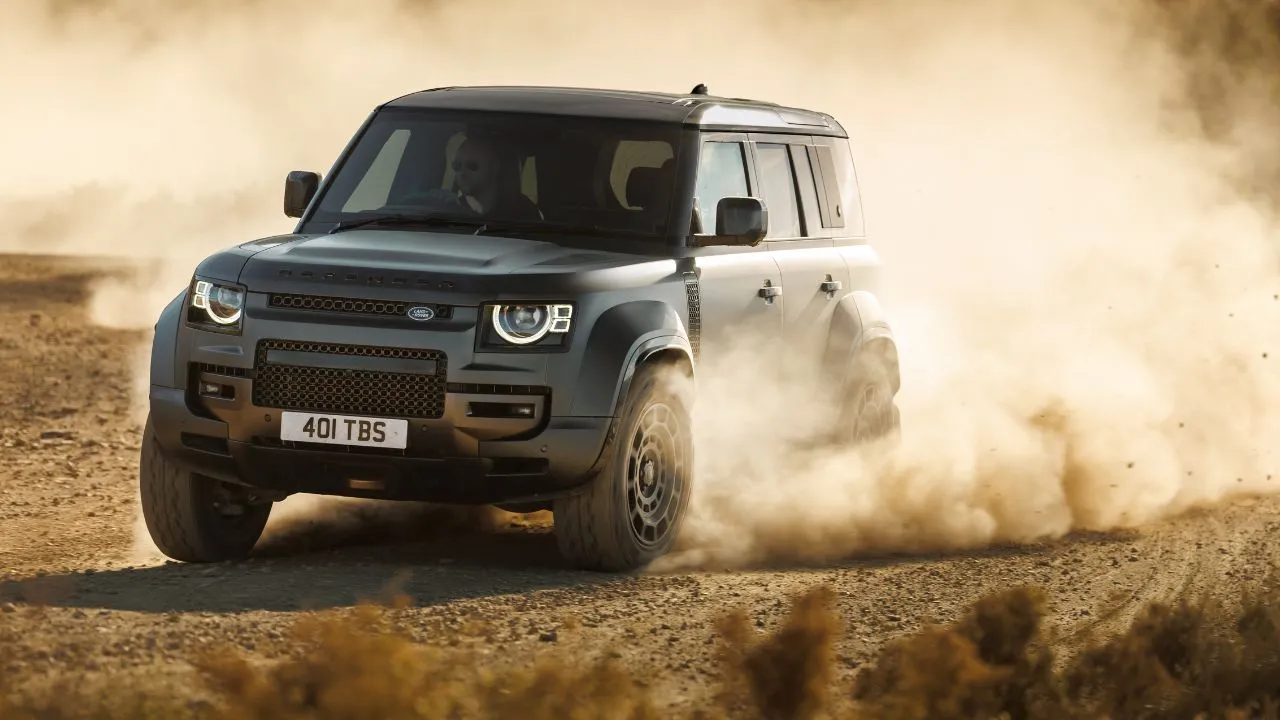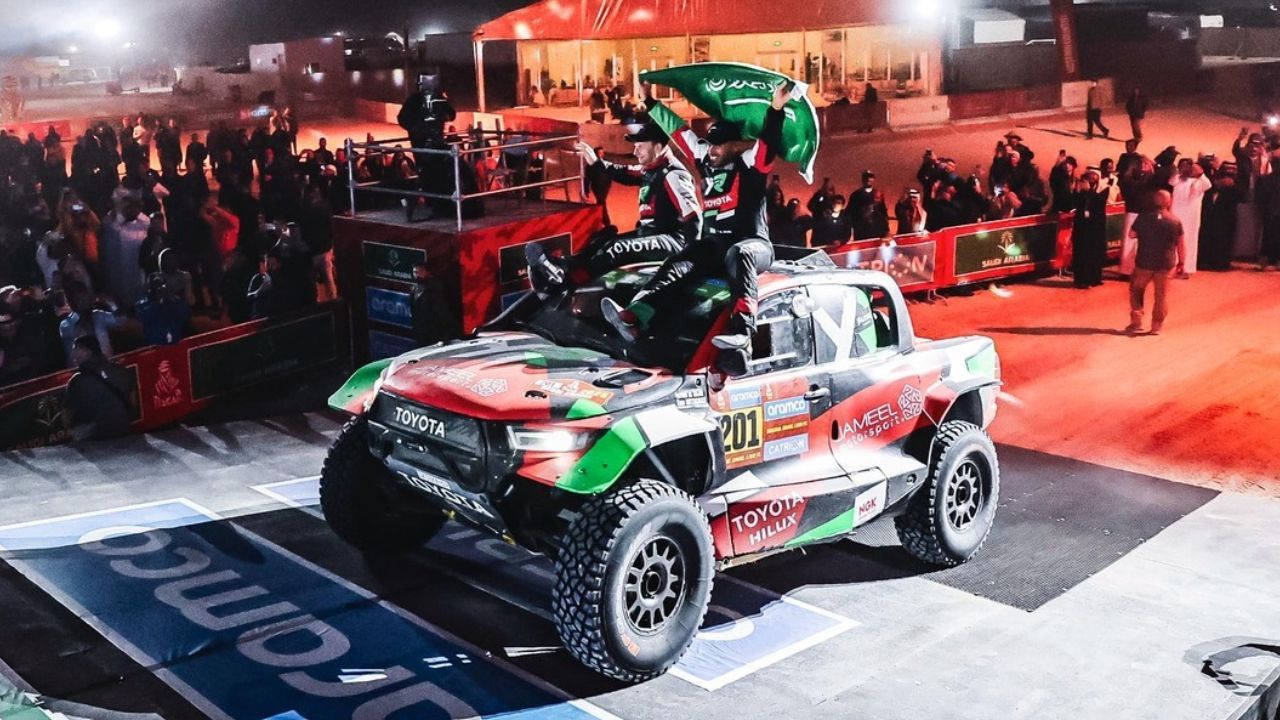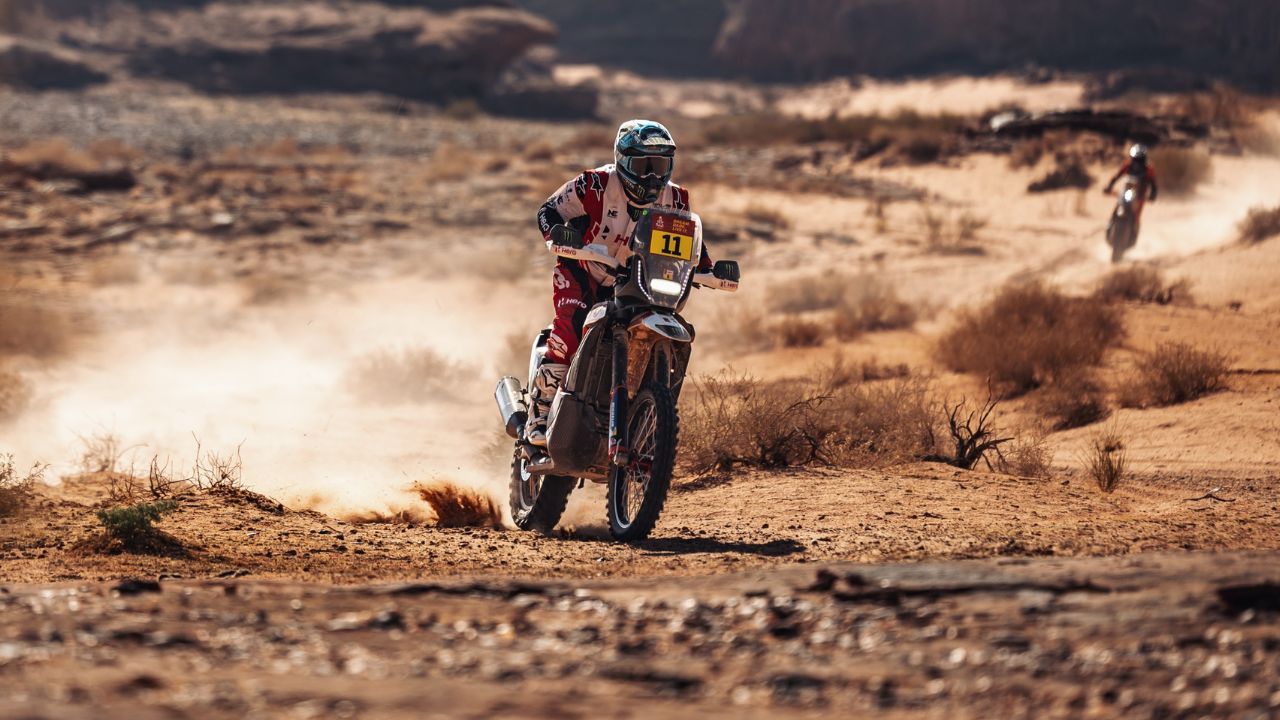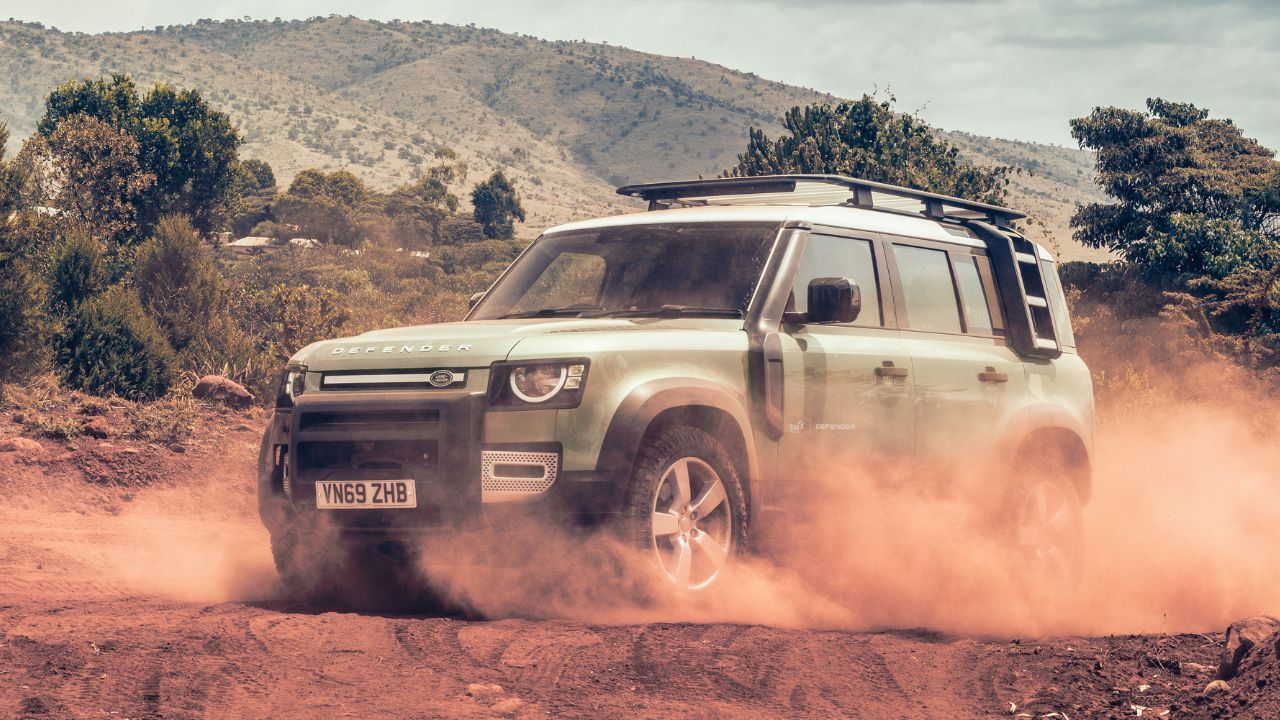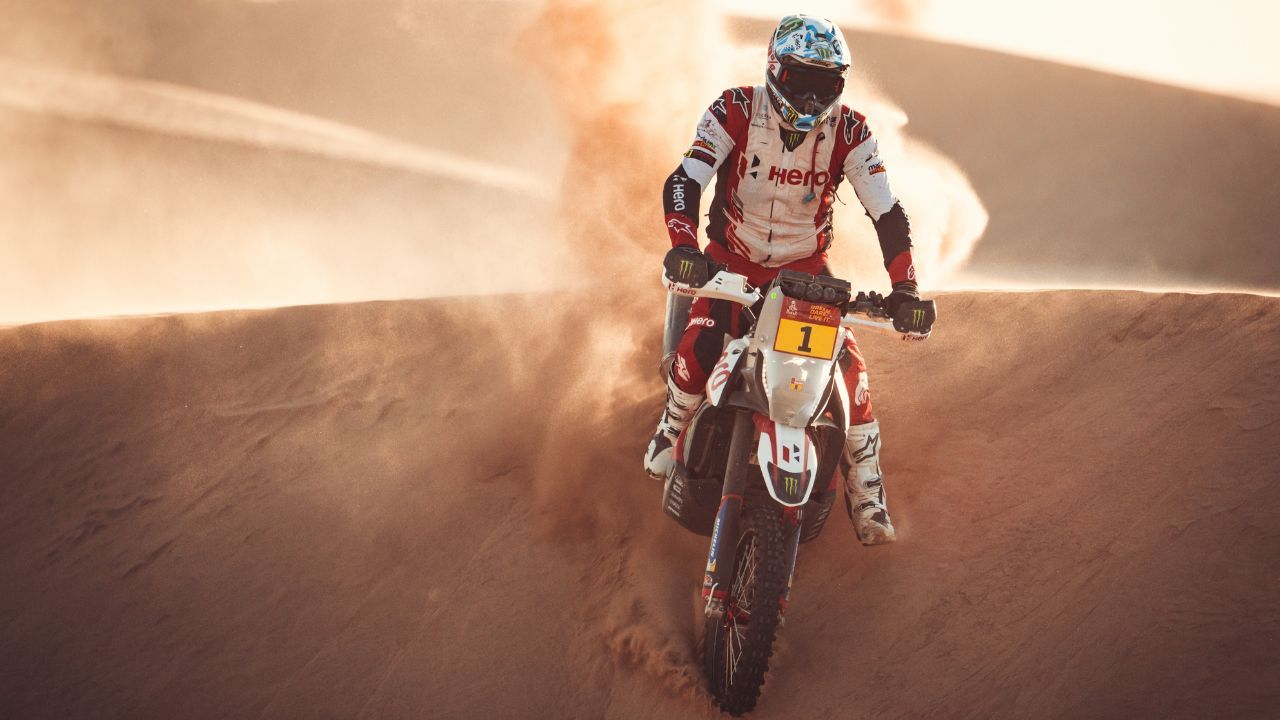CS Santosh Shows Grit at Dakar 2016
CS Santosh’s second outing at the Dakar Rally did not go as planned but he showed grit aplenty through adversity The low-hanging dark clouds
By Vivek Mukherji
CS Santosh’s second outing at the Dakar Rally did not go as planned but he showed grit aplenty through adversity
The low-hanging dark clouds gathering over San Salvadore de Jujuy in the wee hours of January 6 painted a brooding picture. The first marathon special of this edition of the Dakar would take the drivers and riders on a 429-km loop around the 16th century township nestled in the foothills of the Andes, straddling the old mule route linking the Tucuman province to the silver mines in Potosi in Bolivia.
The fourth stage of the rally presented the first real test for the participants and the machines with constant changes in the terrain, alternating between sand and rocks. Besides the daunting length of the special section, the vertigo-inducing altitude gain of 3,200 metres posed more than a handful of additional challenge for the competitors. And being a marathon stage, the drivers and riders wouldn’t have access to assistance at the end of the day meant that reliability of the machines assumed paramount importance.
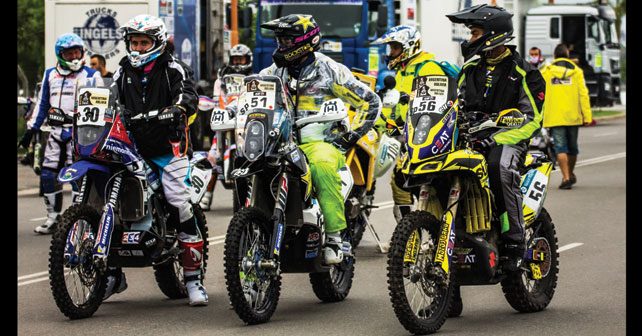
On such a morning, as the groggy-eyed riders trooped into the dining tent for a quick nibble before hitting the road for the day’s ordeal of 630 km, including a road section of over 200 km, the sole Indian in the Dakar, CS Santosh, was in an upbeat mood. He had good reasons to walk with a spring in his step.
Over the past two stages, Santosh successfully improved his position after slipping back in the opening prologue when the airbox of his Suzuki RMZ 450 Rally got flooded during a river crossing, causing his bike to stall. He finished the third stage in 61st position, gaining 34 places over his second stage finish. It had put him in 81st place in the overall standings. The day before, on the second special, which was the first timed section of the Dakar because the first stage got cancelled due to bad weather, Santosh had made up 31 places.
The twisty marathon special in the Andes had given him better hope of further climbing up the order. The sweet handling of his Suzuki placed him on an even keel against the much faster KTMs, Hondas and Yamahas on the tighter parts of the stage. “It’s a long and tight stage, which should work for me. I need to move up the standings before the rally goes into Bolivia,” said Santosh waiting at the starting time control for the day’s first liaison.
A Proven Talent
There was not an iota of doubt about his intentions or capability in the minds of the small bunch of people who made up the Team Suzuki in this Dakar. His exploits in the last Dakar in 2015 earned him plenty of respect and goodwill among the moto riders, irrespective of their star status. “He is a very good rider and has plenty of speed to make it among the top 20,” said his Andorran team-mate, Cristan Espana, who himself is a former world enduro champion.
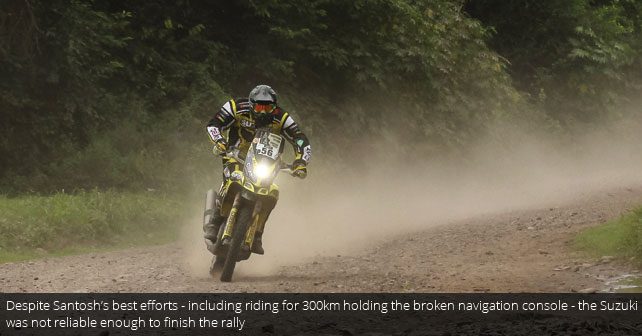
Sitting in the press centre, as the skies opened up, this reporter had his eyes glued to the computer screen as the live tracking went green on the Dakar’s internal intranet. In less than an hour, it became clear that our man was on the move. By the first waypoint, he had gained three more places to move into 58th place. But soon after, something very strange happened. Still within the GPS range of WP1, the live tracking showed that Santosh was stationary. He remained motionless for close to an hour before he got going again. For the rest of the day, the script of the unfolding plot turned from bad to worse. By the last check point, Santosh had slipped right at the back of the pack. Something had horribly gone wrong with Santosh.
By 5 pm, all the moto and quad riders had checked in at the final time control at the Jujuy bivouac, but there was no sign of Santosh. It was only when I met Santosh’s Chilean team-mate, Nacho Carenjo, it became clear that the Indian was in deep trouble. “The mounts attaching the navigation tower to the bike’s frame broke just after the first waypoint. I stopped to help him repair it, but it didn’t look good when he asked me to carry on. All the wires of the navigation system got entangled and he was having problems to get the bike going,” said Corenjo.
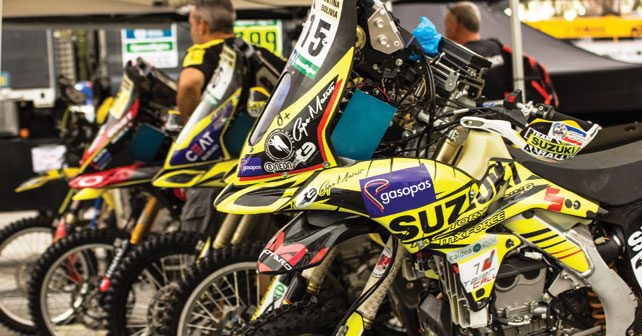
Late that evening, when Satosh was brought to the bivouac by his friend Hemant and his wife Sonali in their hired car, who were travelling through Argentina on a two month vacation and were present at the end of the special, it became clear that his 2016 Dakar adventure had come to a premature end. “The bike’s electricals short-circuited and it stalled permanently at the end of the special. I am out of the rally,” were the first words of a visibly distraught Santosh.
Later in the evening, while having dinner, he narrated the ordeal he faced that day. When the mounting broke near the 100-km mark, Santosh tried to repair it with zip-ties, knowing well that it was not going to last. But for Dakar riders, hope is the only dope. He rode for the next 300 odd kilometres holding the navigation console with one hand. “By the time I reached the final TC of the special, the wires got so badly entangled that the electricals started short-circuiting,” explained Santosh. By this time, the clouds above unleashed their pent-up fury leaving the teeming mass of people in the bivouac scurrying for cover.

